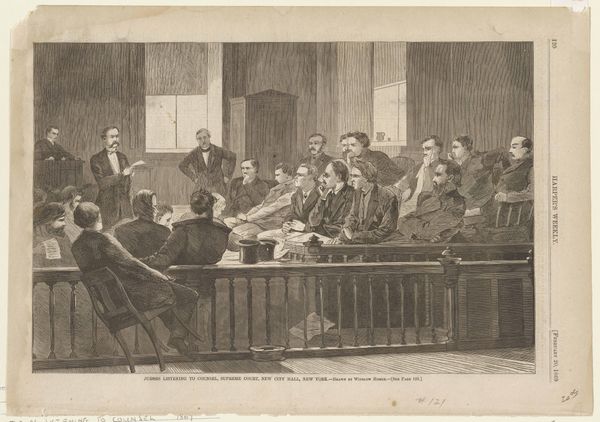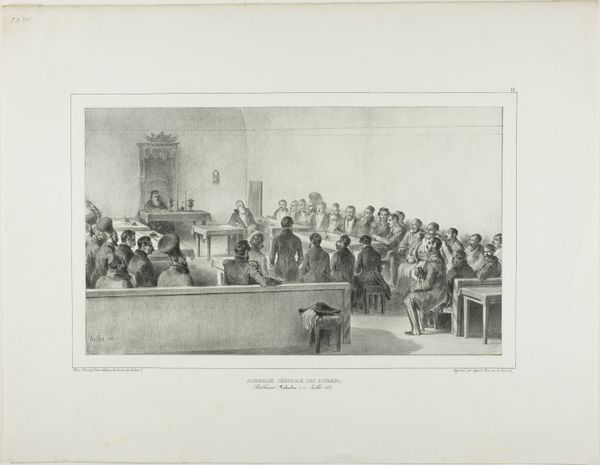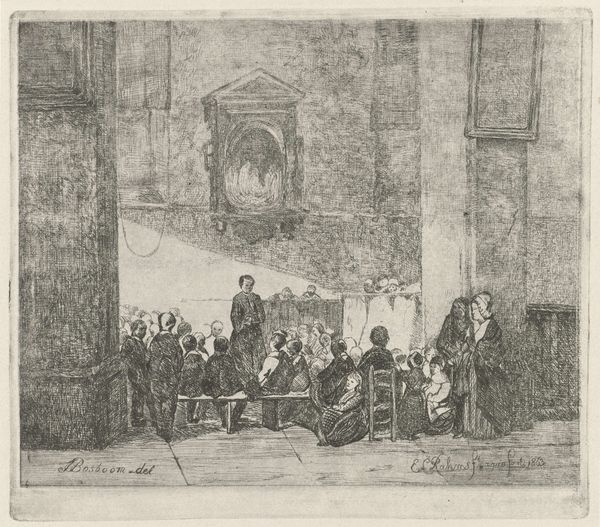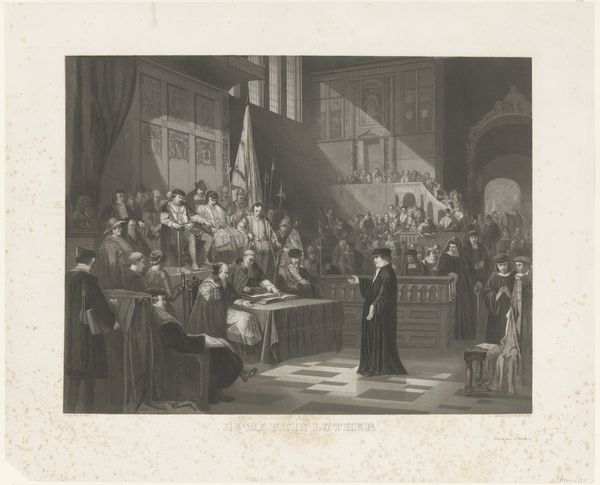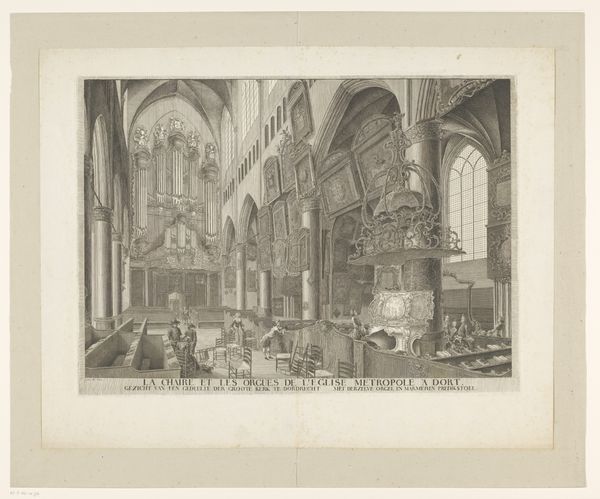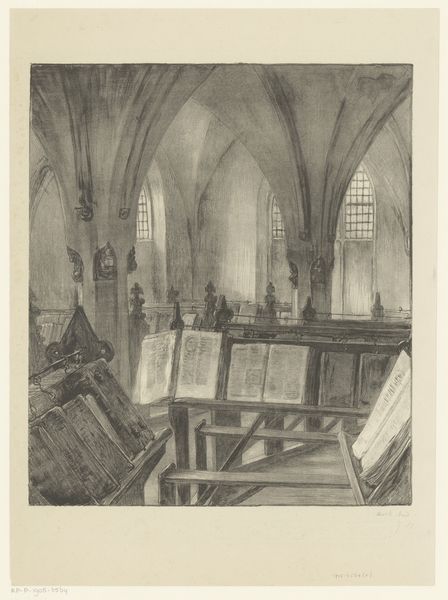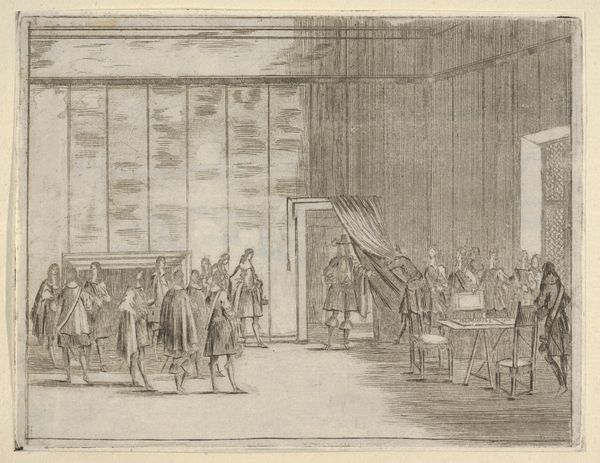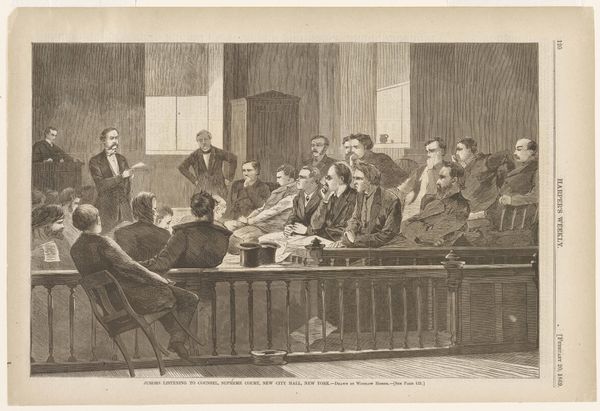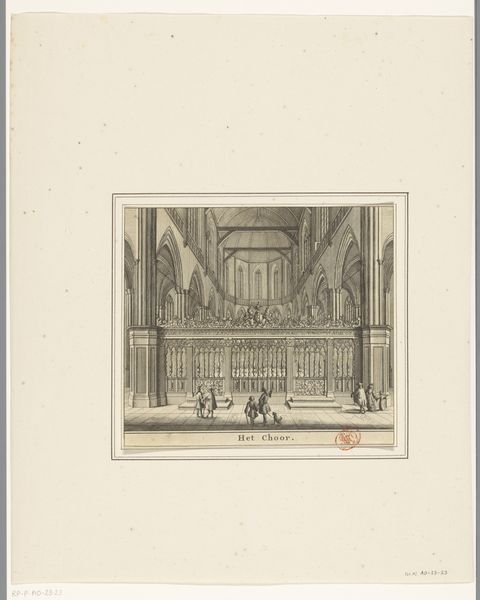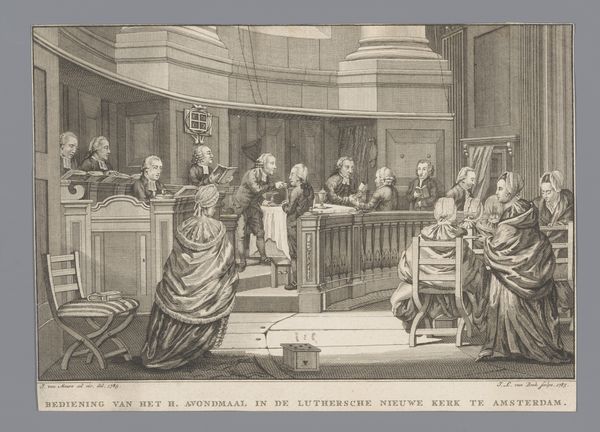
Studie van de gehele compositie voor het (onvoltooide) schilderij van de Nederlandse rechtbank in London, juni 1942 Possibly 1942 - 1946
0:00
0:00
antonabrahamvananrooy
Rijksmuseum
drawing, paper, pencil
#
drawing
#
medieval
#
etching
#
paper
#
pencil
#
cityscape
#
history-painting
Copyright: Rijks Museum: Open Domain
Editor: This drawing by Anton Abraham van Anrooy, titled "Study of the entire composition for the (unfinished) painting of the Dutch court in London, June 1942," created between 1942 and 1946, presents what seems to be a courtroom scene rendered in pencil on paper. It’s captivating, almost dreamlike, but what truly stands out is its detailed architecture juxtaposed with its unfinished quality. What do you see in this piece? Curator: Well, consider the courtroom itself – a stage for human drama, where individuals face judgment, often carrying heavy personal narratives. Look at the imposing Gothic windows. Aren’t they reminiscent of a church? This architectural echo elevates the proceedings, suggesting a kind of secular ritual imbued with a moral imperative. The artist uses architecture here as more than setting – it represents a quest for truth and order. Editor: That's fascinating! The setting itself becomes a symbol. Curator: Exactly. Then notice how certain figures are only vaguely sketched in. Does this incompleteness, or the somewhat medieval flavor of the drawing, subtly point towards the imperfect nature of justice itself, or the incomplete stories we all carry? Perhaps it reminds us that justice, like art, is always in progress, shaped by perspectives and interpretations. The use of medieval art influence is striking for something rendered in the 1940s! How do these visual elements tie into the cultural memory of justice, especially during wartime? Editor: I never considered how the medium itself – an unfinished drawing – could reflect the subject matter. It almost makes the courtroom feel more accessible. Curator: Yes, and think about the personal impact this historical and symbolic context may have had. Do the obscured faces perhaps remind us of the inherent biases and power dynamics within legal structures, past and present? Editor: I am walking away thinking about how much a single artwork can embody in cultural context. Curator: I learned from how the use of light, symbols, and composition speaks across different eras.
Comments
No comments
Be the first to comment and join the conversation on the ultimate creative platform.
